Are you wondering what the difference is between athletic therapy and physiotherapy? If so, you are not alone! This is one of the questions we get asked all the time and we’re here to answer it for you!
Athletic Therapists and Physiotherapists are health care professionals whose aim is to help people move better, feel better and live better. Although there are many similarities between the two professions, there are some differences as well.
Schooling
One of the biggest differences between Athletic Therapists and Physiotherapists is their areas of specialization and focus during their entry-level schooling.
Physiotherapy has three major areas of focus:
- Cardiorespiratory care – lung and heart transplant, post surgical lung (breathing) care, ICU work, chronic lung disease (COPD)
- Neurology – stroke, spinal cord injury, brain injury (not just concussion, but severe brain injury) and chronic neurological diseases (Parkinson’s, Guillain-Barre, MS, etc.)
- Orthopaedics – working with the musculoskeletal system which consists of bones, muscles, ligaments, tendons, nerves and joints
Athletic therapy has two major areas of focus:
- Field care – emergency and immediate care of injuries on site, before they present at a hospital or clinic
- Clinic care of orthopaedics – working with the musculoskeletal system which consists of bones, muscles, ligaments, tendons, nerves and joints

Post-graduation
Immediately after graduation, Athletic Therapists bridge the gap between how a patient’s injury presents in the clinic and helping them transition to an appropriate level of function in their chosen activity or work. For example, lets say you hurt your shoulder. A PT would help you get full shoulder range of motion and strength. It’s important to note that although your shoulder would have full range of motion and strength, it doesn’t mean that it can now fulfill the demands of your activity or work as it was able to prior to the injury. An AT will do the same treatment but, in addition, will provide a specific rehab program to get your shoulder back to its functional activity, whether you’re a hairdresser or a volleyball player.
Athletic Therapists have advanced training in initial care and getting you back to activity sooner. Physiotherapists don’t typically see injuries until 2-4 weeks post-injury. Immediately after completing their education, physiotherapists are better at prioritizing goals for rehab for later stages of injury. New graduates in both professions will give you safe and effective treatment.
A few years post-graduation, differences and similarities between the two professions start to depend on post-graduate training – what additional skills and training the individual therapists decide to take and how they decide to focus their practice. Although percentages vary among provinces, you will almost always find more Physiotherapists working in hospitals whereas Athletic Therapists are rarely seen working at hospitals and are mainly seen in private clinical settings and sporting/athletic events.
How do you decide who to see?
Although the major differences in specialization are easy to spot between the professions, there are some differences within the shared focus of orthopaedics as well. Both Athletic Therapists and Physiotherapists focus on dealing with injuries to bones, muscles, joints of periphery and spine. While Physiotherapists also work with burns and amputations, Athletic Therapists focus on prevention and exercise prescription.
While Physiotherapists have wide-ranging areas of focus in their education, Athletic Therapists hone in on orthopaedic injuries. So if you have a cardiorespiratory or neurological injury or concerns related to burns or amputations, then physiotherapy is the way to go. If you have any injury related to bones, muscles, joints, tendons or ligaments, regardless of how it was sustained, Athletic Therapists have the more specialized education and expertise to help you on your recovery back to activity

Khatija Westbrook, PhD, PT, CAT(C)
Khatija has been a practicing Physiotherapist and Athletic Therapist for over 25 years. She has taken her passion for elite athletics into working with varsity athletes at three different universities, working with two national teams and at numerous major games, graduate work in sport epidemiology and the classroom. She teaches in Athletic Therapy and Physical Literacy.
Khatija has a concomitant passion for complimentary, alternative and integrated medicine. She has taken courses, workshops and seminars in acupuncture, craniosacral therapy, visceral manipulation, cupping, Qi Gong, Reiki and holistic energy healing

Ulkar Mammadova, BSc.Kin, CAT(C), CSCS
Ulkar is an Athletic Therapist and a Certified Strength and Conditioning Specialist. She is currently a senior student at the Canadian College of Osteopathy. She has worked with varsity level athletes at Mount Royal University and SAIT in Calgary. She also enjoys working with younger athletes on a variety of community teams including football, hockey and lacrosse. She is the owner of Ünify Wellness where she sees patients for clinical care. You can learn more about her and Ünify Wellness at www.unifywellness.ca

